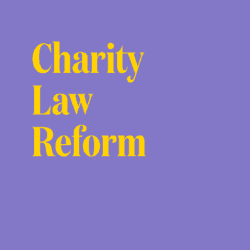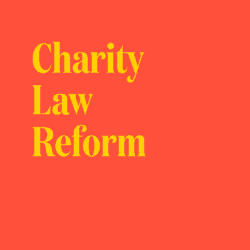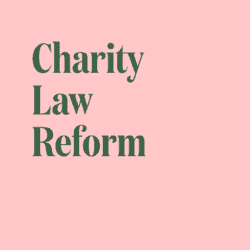The complex regulatory environment for charities and not-for-profit organizations in Canada is in desperate need of simplification. Lawyers practising in this area have been writing about the need for reform for many years. In this series, introduced by Yvonne Chenier, they will raise awareness on these friction-causing issues and offer common-sense solutions.
To put the needs for reform into perspective for the reader, each article in the series identifying issues that require attention will be discussed using a similar framework. The legal issue that exists will be identified to show the problems that continue to arise. The types of organizations impacted by the problem and how they work around it will be discussed. A brief history of potential regulatory solutions that have already been proposed will be outlined. Finally, the benefits of solving this issue for the sector will be explained.
The legal issue that exists
Initially, a not-for-profit organization is created under authority of a statute or other legal document such as a trust deed or constitution, with legal requirements that differ between Canadian jurisdictions. The next layer of complexity is the status that the Canada Revenue Agency (CRA), as it interprets the Income Tax Act, bestows on certain not-for-profit organizations that qualify as registered charitable organizations or public or private foundations for tax exemption and other special privileges under the Income Tax Act. Other organizations without this status are left to interpret the Income Tax Act for any other provisions that may apply to them. In other words, the beginning of an organization is created by one of many potential legal documents, and any special status bestowed upon it is given by a regulator interpreting legislation.
This complex environment results from the separation of powers in our Canadian Constitution. The Constitution grants primary legislative authority in regard to charities to the provinces. Each province has the ability to create charitable organizations. Most have their own way of doing it. However, there is only one regulator who bestows the special tax-exempt status and creates rules that regulate the behaviour of registered charities – and it is a federal one. This federal regulator, the CRA, has no power to help with many things needed for an organization’s administration. These matters are dealt with differently among the provinces, or not at all.
There is no uniformity in the law that affects the day-to-day governance of non-profits across Canada and [nowhere] for them to go to get the help they need.
Much of the burden arising out of this is experienced by charitable and not-for-profit organizations trying to operate seamlessly across the country. When two or more levels of government are involved in organizations that cross provincial or territorial borders or impact a federal corporation trying to work in a provincial jurisdiction, then there are issues. Much of this is not understood and may be simply ignored until something happens to highlight it, such as punitive fundraising rules or registration requirements to allow an organization to even sign a grant agreement.
It is time for a discussion of issues in Canada as basic as what is the definition of charity and what exactly is a charitable gift. Mixed purposes and charitable purposes and the ancient doctrines that still apply need to be explored in this multi-jurisdictional context. Is there no one-size-fits-all when it comes to the definition of and treatment of unincorporated associations, non-share corporations, and hybrid organizations? Extra-provincial registration and the different treatment on something as basic as director remuneration can become frustrating. Likewise for fundraising activities, investment principles, and liability of volunteers – the laws across Canada have no consistency.
In this series, the authors will identify legal idiosyncrasies that exist in some provinces but not in others that become day-to-day reality for those trying to operate a charity or not-for-profit organization – usually without legal training and unversed in constitutional law. There is a strong argument for a central depot for regulation, information, and education for the sector.
Types of organizations impacted by the problem and how they work around it
So what kinds of organizations are impacted by this jurisdictional and constitutional complexity that overlays the charitable and not-for-profit sector? Any organization that confines its activities to within its provincial or territorial borders has to worry only about the regulatory environment and its governance from the laws of one jurisdiction. However, if that organization hopes to be able to give tax receipts to its valuable donors or otherwise seek funds from those who fund only organizations with this special charitable status, then the interplay with the federal government and the CRA’s Charities Directorate is unavoidable. There are approximately 85,000 registered charities in Canada, and we know that because that figure is easily ascertainable by using the data from the Charities Directorate; however, the number of not-for-profit organizations in their various forms, either unincorporated or created under the laws of jurisdictions from coast to coast to coast, is unknown. Without doing too much research, we might find we have hundreds of thousands of organizations that are not registered charities but that are impacted by cross-jurisdictional issues as they try to do their good work.
Canada has been left behind by other commonwealth jurisdictions that have enacted legislation that addresses the contemporary problems.
The work-around, as you will see from some of the discussion that will follow in this series, can involve jurisdiction shopping to find the right fit for an organization. Some Canadian jurisdictions have modernized their laws, while others have failed to keep up. Between 2011 and 2014, after the modern Canada Not-for-Profit Corporations Act came into effect, some not-for-profit organizations migrated or continued into that new legislation because they could. However, some jurisdictions prohibited that continuance until they amended their own legislation to allow it after some pressure at home (here’s looking at you, Alberta, my home province.) There are jurisdictions today that still have legislation that does not allow for continuance at all, so a not-for-profit has no choice but to basically remain captive under its incorporation statute. The differences also lead to confusion when those without legal training look to other jurisdictions and assume that the laws must be the same where they are and try to act accordingly. One example of this is often seen when bylaws suitable under legislation in one jurisdiction are innocently (and ineffectively) adopted by an organization in another jurisdiction even though there may be no correlation to their own legislation.
Potential regulatory solutions that have been proposed
Over the past few decades, solutions have been proposed, studied, and trumpeted, but to date we have seen no real progress. There is still no uniformity in the law that affects the day-to-day governance of non-profits across Canada and no home for them to go to get the help they need to navigate through the minefield of this regulatory environment.
The provinces have virtually ignored their constitutional legislative authority in regard to charities, despite the work of a few reports from their own law reform commissions, such as the 1996 Ontario Law Reform Commission’s Report on the Law of Charities recommending overhauls. These comprehensive reports review the law of charity, both provincial and federal, and contain detailed reform proposals for provincial and federal law.
Canada has also been left behind by other commonwealth jurisdictions that have enacted legislation that addresses the contemporary problems. England and Wales, for example, passed overhauling legislation beginning with the Charity Act, 1960. Progress or proposals have been made in Australia, New Zealand, Singapore, and Hong Kong. These jurisdictions have created or suggested solutions that Canada could look at.
Court decisions shine a light on the need for regulatory clarity. One need only review the extensive Christian Brothers litigation, culminating in the decision of the Ontario Court of Appeal ((2000), 47 O.R.(3d) 674), in which British Columbia statutorily reversed any authority that that Court of Appeal decision had, or might have, in BC. The impact of the decision on the validity of charitable purpose trusts or whether a charitable corporation is a trustee is still unclear from province to province.
The benefits of solving this issue for the sector
To solve this problem for the charitable and not-for-profit sector would be to eliminate much of the friction that exists in the system. Friction wastes resources in the form of money and administrative time. Resources, scarce as they may be sometimes, are what drive the social sector, as passion alone does not pay the bills. In this series you will hear about specific friction-causing issues and common-sense solutions from prominent legal practitioners in our country, all of whom are active and passionate members of the Canadian Bar Association’s Charities and Not-for-Profit Law Section. Collectively, these individuals and their ponderings have the answer to how to relieve this 70-year-old burden. The ultimate solution, as the reader will hopefully conclude, is charity law reform in Canada.


